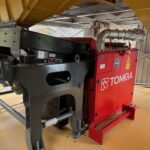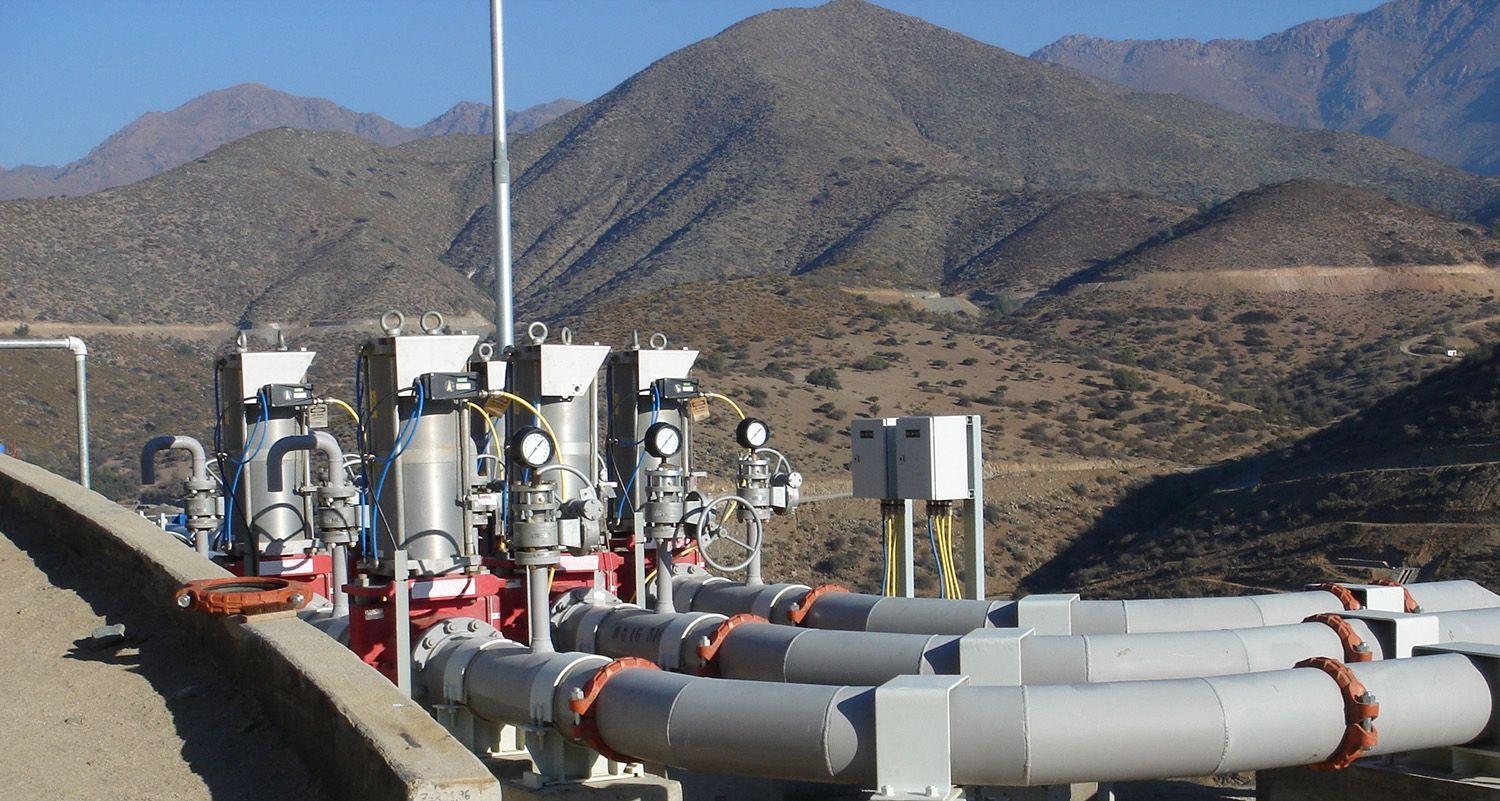Processing various types of minerals may create significant challenges for valves and associated equipment. The process will likely wreak havoc on conventional types of valves. It does not matter if the process is a lime plant, cement plant or quarry. Valves for abrasive slurry all have one aspect in common; they fight abrasion on a daily basis. Both wet minerals and dry materials passing through a pipeline can be extremely abrasive.
Lime slurry or milk of lime is a unique abrasive slurry. It is typically moved through various types of processes at approximately 30 – 35% solids and at pressures from 35 – 75 psig. Temperatures might be slightly elevated to 110 – 140°F, so this does not sound like too difficult a duty for valves.
Why is lime hard to handle?
Lime does not dissolve in solution. Instead, it is a suspended solid. If the flow is too slow, the solids will settle out. That is why lime slurry is recirculated to keep it moving. Lime also has a tendency to scale on surfaces. Any open void areas, cracks and crevices in a valve or a pipeline will begin to collect lime particles. Those particles will fall into that area and begin to solidify. If it is a ball or a gate then the lime slurry will begin to scale on those surfaces.
For instance, users may require the gate to be Teflon coated to help prevent scale buildup and also assist in the ease of release of the buildup. Lime is tough because it combines sharp abrasive slurry with the scaling aspect. Many types of valves for abrasive slurry will perform very poorly in lime slurry.
Importance of choosing correct valves for abrasive slurry
These valves will have trouble opening and closing and the repair rate will be multiplied many times when compared to a valve that is built for this environment. In a quarry, moderate scaling may occur but this is nothing compared with the way lime slurry scales. However, there are other operational challenges that also revolve around abrasive flow streams. In a quarry, the pipeline may be transporting water with sand or it may be transporting a rock slurry. Unless the owner is willing to accept a high rate of repair, conventional valves are not suitable for this process.
The wet cement production process involves a slurry of lime, stones and water fed into a kiln. The slurry is typically 65 – 70% solids. Therefore, valves for abrasive slurry in wet cement plants must be capable of handling abrasive flows. There are now few wet cement plants in operation. The cost of burning off so much additional water in the kiln is high and the more recent cement processes utilise a dry feed of materials into the kiln.
How to combat abrasion in the cement industry?
There are two approaches to combating abrasion. One is to make the components that contact the flow stream harder. An example would be to place a satellite or similar material overlay on the metal components. The other approach is to make the components in contact with the flow stream softer. Rubber linings are widely utilised by the cement industry. For example, ball mills have rubber wear linings to protect the ball mill from the abrasion and impact of the metal balls. Rubber is also incorporated in valves and pumps of various types. Rubber is an excellent material for abrasion and certain types of rubber valves for abrasive slurry will perform very well in these difficult environments.

Rubber lined Flowrox pinch valve for extremely abrasive slurries
The ideal characteristics of valves for abrasive slurry
Ideally, a valve is 100% full port, has nothing in the flow stream when open, has no areas in the valve where materials can accumulate, is easy and inexpensive to repair, and has all components that are external to the flow stream protected from the flow. Self-cleaning is an additional advantage in valves. There are not too many valves that possess all of these characteristics.
The ideal valve may be Flowrox pinch valves for abrasive slurry flow conditions. The pinch valve is a very unique device. The valve utilises a rubber sleeve that is 100% full port and acts like an extension of the pipeline when in the open position. There are no pockets or cavities in the valve for material accumulation. All of the moving components of the valve are housed within the valve body and are completely isolated from the process medium during normal operation. The valve is self-cleaning. Material buildup on the elastic inner surface begins to flake, as the rubber sleeve is flexed during normal opening and closing. As the valve closes further, the velocity of the fluid increases and helps to further clean the inner surface. The valve is very fast, inexpensive and easy to repair. A pinch valve has an extremely long MTBF.
Look for high quality rubber sleeves
Nevertheless, not all pinch valves are great. If one has been tried and had poor product life then perhaps the wrong manufacturer was selected. There can be great variation from one manufacturer to another in pinch valves. Even some brands that advertise heavily can end up having poor rubber quality. And that is the most important statement when dealing with pinch valves. The rubber sleeve is the heart of the valve. If that rubber is not high quality then the valve will perform poorly. Looking for manufacturers that are able to produce pinch valves that are compatible with pressures up to 1500 psig is recommended. If a process is only 50, 75 or 150 psig and the pinch valve manufacturer is able to produce valves that can survive in heavy slurries at 1500 psig, therefore, it is likely they have very high-quality rubber technology.
Abrasive dry processes
Dry processing of powders or minerals is also difficult for most valves. The dry powder, with its abrasive properties and erosive nature, will slowly cut through metal components. Any pockets or cavities will quickly become filled with the pneumatically conveyed powder. For these same reasons, a pinch valve is likely to be a good idea for pneumatically conveyed powders. Many bulk unloading facilities have used pinch valves to convey sugar, flour, cement, and other materials. Many valves in bulk unloading applications may be outdoors.
In regions of the world where the temperatures may reach freezing, electric actuators are a good choice. Numerous high-quality electric actuators can be equipped with internal electric heaters and manual overrides. In those cold regions for outdoor conditions, many customers have opted to avoid pneumatic actuation due to problems with frozen air lines. There is always a certain amount of condensation in the instrument air systems and might be a source of problems in cold regions. Electric actuation is much more expensive but it avoids the potential problem mentioned above.
Potential alternative to pinch valves for dry and wet processes
There are hundreds of different types of valves for abrasive slurry that could be alternatives, but a huge majority of them would fail horribly in abrasive wet slurries and dry powders. One product that has been used extensively by the mining industry is a push-through knife gate. This type of valve also incorporates two rubber sleeves that are spring-loaded. The rubber sleeves actually have metal springs vulcanised into the rubber. In the open position, the rubber sleeves are the only components in contact with the flowing medium and they are 100% full bore. As the valve begins to close, the stainless steel knife separates the two spring-loaded seats. The seat seal on both sides of the gate, creating a 100% bubble-tight seal.
This type of valve has a flushing area at the bottom of the valve that collects any material that has been pushed through the rubber sleeves out of the bottom of the valve. Essentially, this Flowrox knife gate valve design has created a means for dispelling those solids that might have accumulated at the bottom of the valve. The flushing area has a cover plate that can be removed so the discharged materials can be dispelled directly to the ground or the plate has two ports that can be equipped with flushing water to help clean the chamber.
Benefits of load distribution rings
One new feature that is offered only by Flowrox is load distribution rings, also incorporated in the rubber sleeves. When rubber-lined knife gate valves are placed into very tight piping constraints or when flanges have raised faces, such as Victaulic flanges, the flanges may create a lot of compression on the rubber sleeves, which may cause damage to those sleeves. The actuator might stall as well because of the extreme force placed on the knife blade as a result of the force placed on the rubber sleeves. In these instances, the valves fail to work properly.
This does not happen frequently, but it does happen. The new rubber lined knife gates with incorporated load distribution ring completely eliminate this problem. The metal load distribution rings that are vulcanised into the rubber prevent the excessive load being excerpted to the rubber sleeves. Instead, this load is transferred to the metal body, which really cannot be damaged. This type of valve is not as foolproof as the pinch valve but it is less costly, takes up less space and is lighter, especially in large valves.

Flowrox SKF knife gate valve
Conclusion
Success can be declared by engineering and maintenance personnel after they have selected one valve or another for difficult processes. Some valves that are in abrasive slurries may only last 2 – 3 months before they need repair or replacement. If engineering and maintenance teams replaced some of the valves that were lasting 2 – 3 months and the new valve lasted 6 months, then they can claim success, as they doubled the MTBF. However, success is objective. There are valves that can last two, three, four or even five years before they need to be repaired in abrasive services. In a nutshell, improving life to 6 months is an improvement. Yet, in many cases, this improvement could be substantially better. Some of the above-mentioned valves might provide significant cost savings and reductions to required maintenance.















